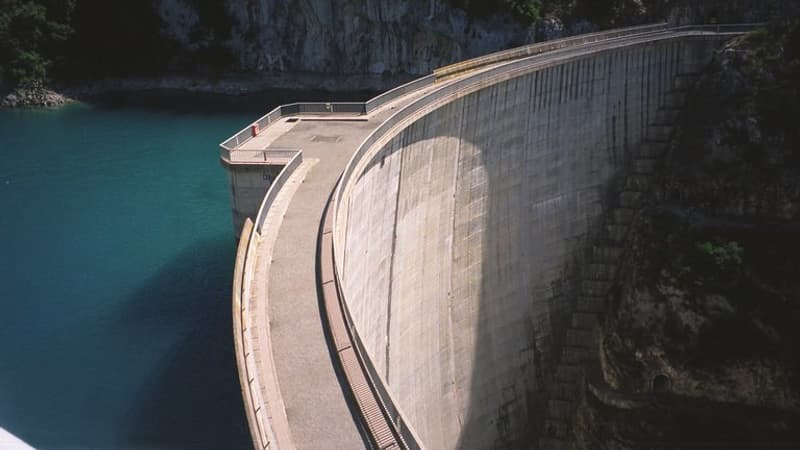It is an underexploited renewable energy: under the impetus of EDF, France wants to release the “potential” of electricity production from its dams, a national patrimony dormant because of an old dispute with Brussels.
A historical and little-known heavyweight in electricity production, hydroelectricity is at the center of a quiet battle in Brussels, where the European Commission has been pushing since the mid-2000s for Paris to put its dam concessions back into competition.
38 concessions already expired
The hydraulic park essentially consists of approximately 340 structures operated under public service concessions. The majority is awarded to EDF (70% of national hydroelectric production), the rest to Engie through its subsidiaries, the Compagnie National du Rhône (around 25%) and the Compagnie Hidroeléctrica del Sur (less than 3%), according to the Court of Auditors.
“Thirty-eight concessions have already expired,” MP Marie-Noëlle Battistel said on Wednesday during a hearing with EDF chief executive Luc Rémont in the National Assembly. After two formal European notifications in 2015 and 2019, the case is slipping.
The Court of Auditors has asked the Government to “quickly get out of this situation to prevent the overall management of the hydroelectric park from deteriorating and to be able to fully play its role in the energy transition.”
Change model to get out of concessions
So how to get out? EDF advocates that the works be operated under the authorization regime, as “in most European countries”, which would free up the investment, Luc Rémont stressed on Wednesday. “The concession system itself blocks investment,” he justified, when presenting his hydroelectricity proposals for the first time.
According to EDF, this regime forces the structure to return to competition if it is going to be the object of a substantial investment aimed, for example, at increasing its power. This is enough to delay major modernization projects in sometimes aging facilities.
On the contrary, an authorization scheme would allow “investing in dams without losing their operation”, sums up an EDF spokesperson. “Whatever the government’s choice, the solution must be in accordance with European law, common to all public and private actors, and fair,” insists another player in the sector.
Hydroelectric, the first renewable energy in France
The weight of hydraulics is not negligible: according to the Court of Auditors, “France has the largest park in the EU in mainland France, with a power of 25.4 gigawatts.” The nuclear park weighs 61.4 GW.
“Hydro” production, even falling in 2022 to a record low since 1976 due to drought, accounted for 11% of electricity production. It is still the main renewable energy, ahead of wind and solar, and it has the advantage of being able to be stored.
The “development potential remains very significant with at least 500 megawatts of power increase and 1,500 MW of pumped transfer station (STEP) capacity by 2035. And other projects are being studied to add 2 GW beyond that,” explains Emmanuelle Verger, director of EDF Hydro.
Dams of a particular type, the WWTPs function as “mega-batteries” in the open air thanks to a system of turbines that release and then pump the water backwards. France has only six of them, although they make it possible to absorb consumption and production peaks.
Source: BFM TV


